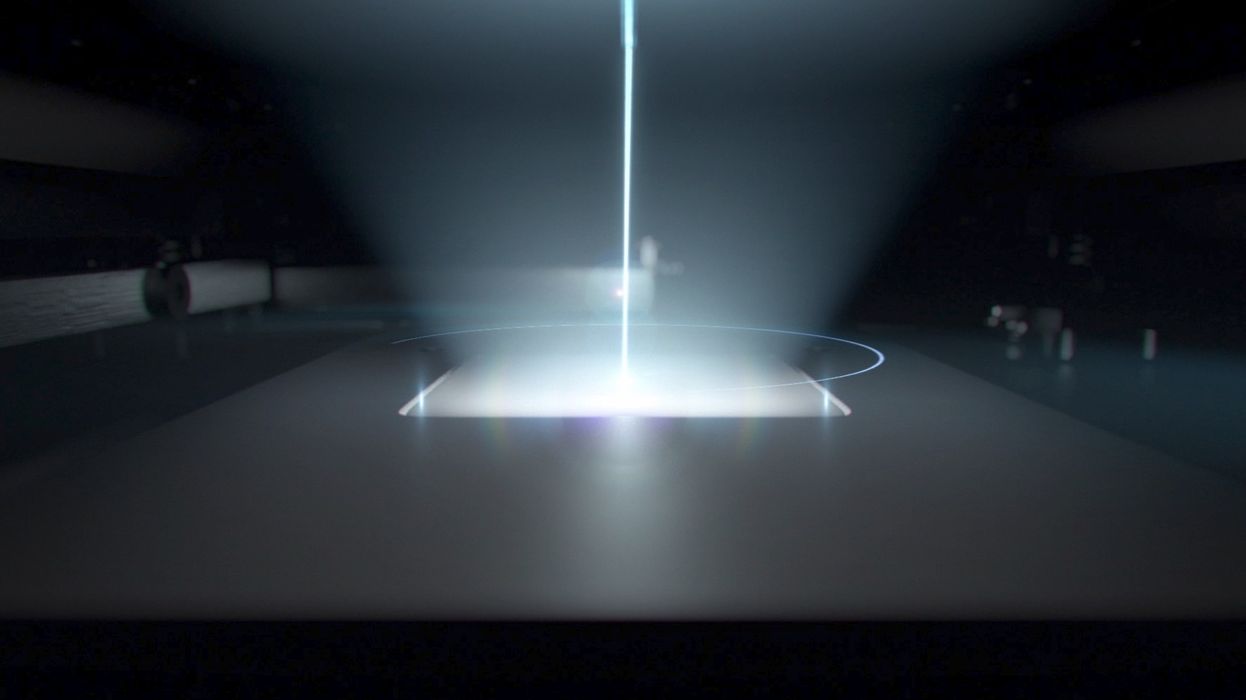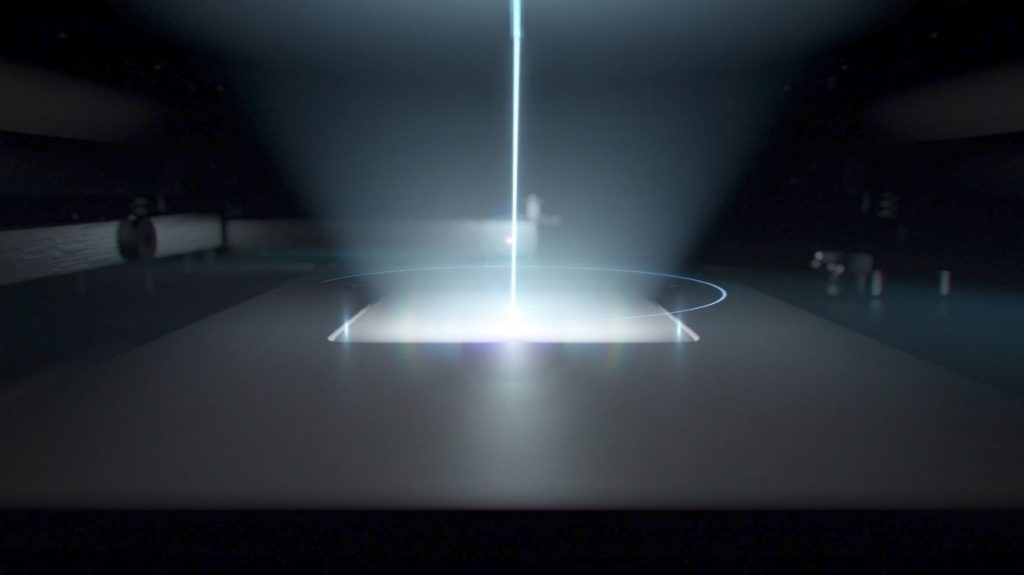
Startup company Axtra has developed an unusual hybrid 3D printing process they call “Hybrid Photosynthesis”, or “HPS”.
The process is intended for use with liquid photopolymer resin, and has been implemented in the company’s upcoming Lumia system.
But what is HPS, and how does it differ from conventional resin 3D printing approaches?
The company sought to solve one of the ongoing dilemmas in resin 3D printing: the tradeoff between quality and productivity. This translates to the two main approaches to industrial resin 3D printing, the SLA and DLP processes.
In SLA, a laser laboriously traces all solid portions of each layer, creating high quality prints at relatively slow speed. Meanwhile, DLP processes involve illuminating the entire layer all at once, which is faster than waiting for laser motions.
In addition, the DLP approach cannot be scaled up very much because the energy per pixel gradually decreases as you expand the XY build area dimensions. That’s why you often see DLP resin 3D printers having rather small build volumes. On the other hand, SLA can be scaled up to quite large volumes by means of a galvanometric mirror.
Industrial buyers of resin 3D printers must make this choice, and that’s the way it’s been for years.
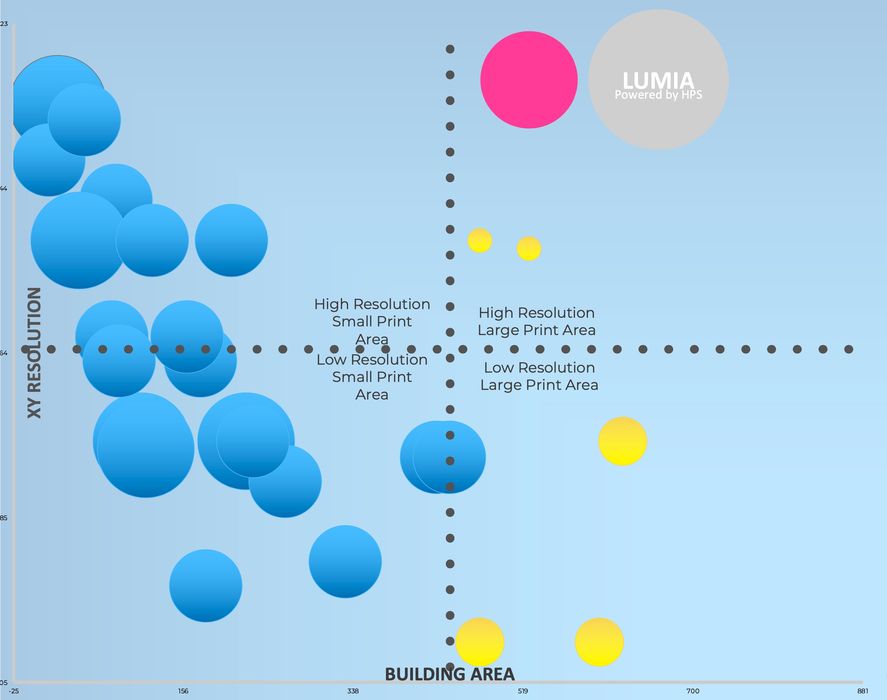
Axtra hopes to change that with HPS, which literally combines a laser and a DLP projector into a single, unified light engine. The idea is to leverage the benefits of each approach to overcome the disadvantages of the other.
Does this actually work? It seems so, at least according to some sample print images provided by Axtra. Here we see a comparison of SLA, HPS, and DLP prints. Note the surface quality differences between them:
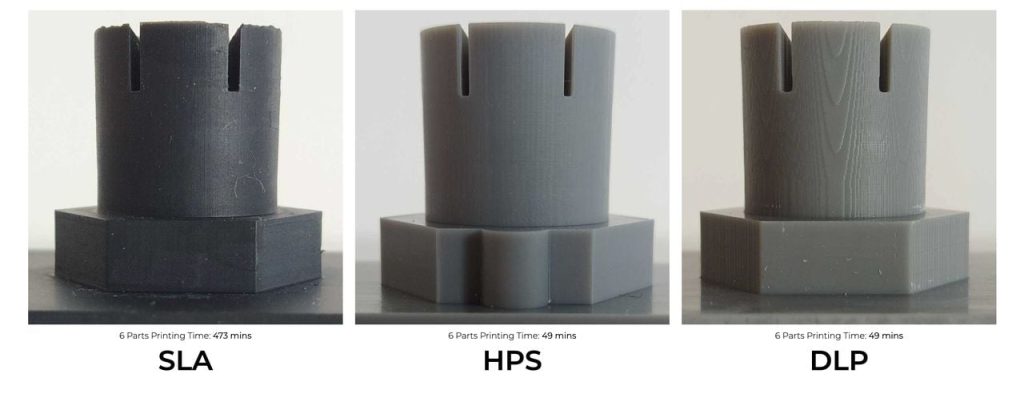
Print speed is maintained through the use of a no-stick vat surface that reduces or eliminates delays from peeling during layer changes. Axtra calls this their “Revox” technology, which includes a “non degenerative resin vat”.
As of today, the company’s first system, Lumia, is in a closed beta program with several unnamed clients.
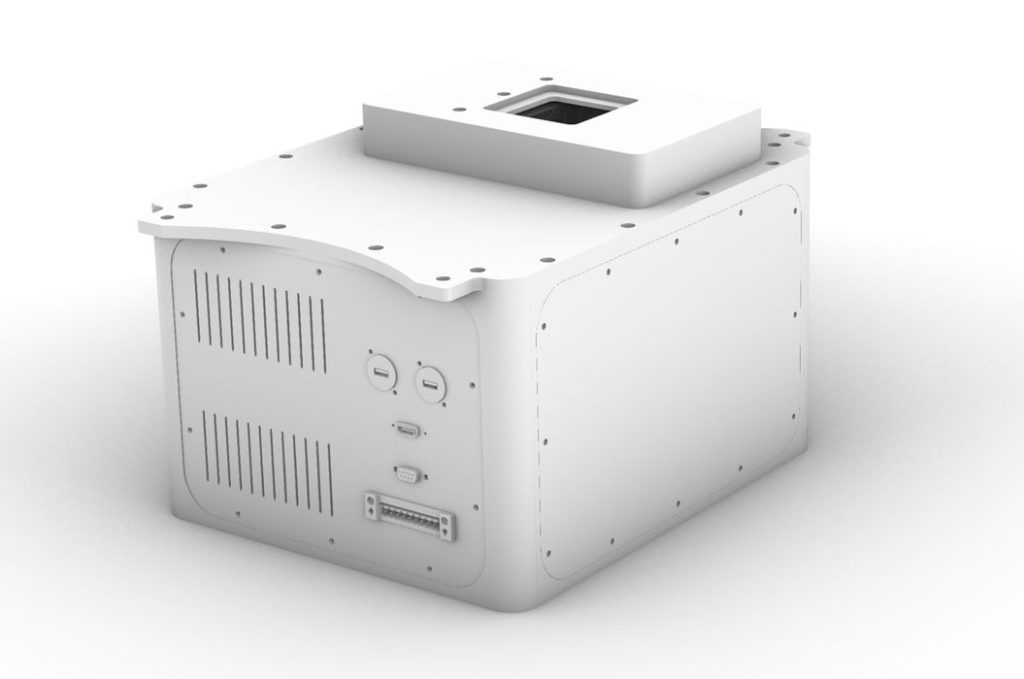
The Lumia HPS 45 3D printer has a very large build volume of 265 x 149 x 600 mm, far larger than is typically seen in desktop resin 3D printers, hinting at the true capabilities of HPS.
Print speed is said to be up to 9mm per minute, or 540mm per hour. They also say the entire print volume can be printed in only 90 minutes. This is extreme speed as far as resin 3D printing goes, and if they can maintain the quality shown above for the entire job, that’s a game changer.
The company is also on the verge of announcing a huge Series A investment to power the company forward.
That’s good news for the startup, which seems to be staffed with a good combination of experienced AM tech and management folks. The company has also obtained quite a number of patents, including:
- WO-166005A1 HPS – Hybrid Photosyintesys Technology
- WO-166006A1 VRI – Variable Refractive Index Technology
- WO-1990094A1 ZCL – Zero Collimation LCD Technology
- EU-102021000026378 FreeForm – Supportless Printing
In addition, there are at least five others in the works, including technology for powder systems (!), ultra-viscous materials, and more.
You can’t quite buy a Lumia HPS 45 3D printer today, but they intend on showing off the system to the public at Formnext in November, and taking pre-orders at that time.
The Lumia system as described seems quite suitable for large-scale production of high quality parts, and should be of interest to manufacturers.
I’m interested to learn more about the Lumia system and Axtra, and will definitely look them up at Formnext.
Via Axtra

